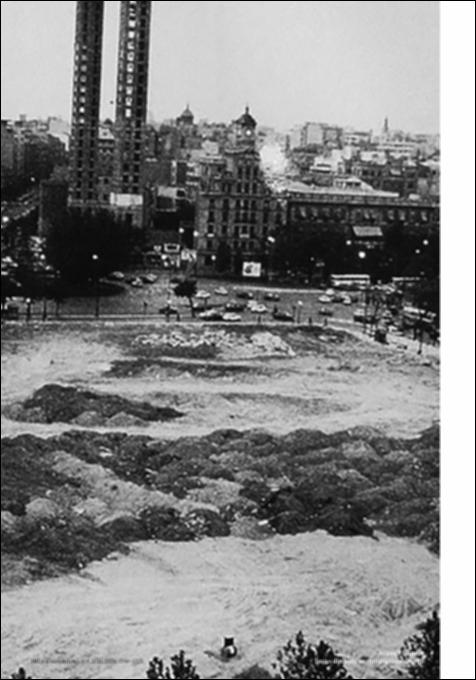Please use this identifier to cite or link to this item:
http://hdl.handle.net/10637/11920Origen e identidad del espacio público: de Santa Bárbara a Colón.
| Title: | Origen e identidad del espacio público: de Santa Bárbara a Colón. Origin and Identity of the Public Space. From Santa Bárbara to Colón. |
| Authors : | Rodríguez Romero, Eva Juana. |
| Keywords: | Madrid; Espacio urbano; Historia urbana; Paisaje urbano; Plazas ajardinadas; Urban space; Urban history; Urban landscape; Landscaped squares |
| Citation: | Rodríguez Romero, Eva J., «Origen e identidad del espacio urbano. De Santa Bárbara a Colón», Constelaciones nº3, 2015 pp.103-124 |
| Abstract: | El Madrid antiguo era, como tantas veces se ha dicho, una 'ciudad conventual'
por el gran número de fundaciones religiosas que había en él, por el inmenso
tamaño de las mismas y por la impronta que tenían los monasterios y conventos
en su imagen urbana. Aunque a partir del siglo XIX, con las leyes de Desamortización
de Bienes Eclesiásticos y con la modernización de las instituciones políticas
y la secularización de la sociedad, fueron desapareciendo o transformado
su uso un gran número de establecimientos religiosos, aún es posible leer en
la ciudad la huella de aquellos conjuntos arquitectónicos. Muchos conventos
fueron demolidos pero la traza urbana a su alrededor permaneció. En su lugar
aparecieron plazas y zonas ajardinadas de uso público, siguiendo las corrientes
higienistas del momento. Se analiza la evolución de una zona neurálgica y muy
consolidada del centro de Madrid, a través de la cartografía histórica (superponiendo
planos representativos desde el siglo XVII hasta la actualidad), desde su
origen como zona de concentración de conventos hasta lugar representativo que
concatena diversos espacios abiertos de uso público. The old Madrid was, as often said, a 'conventual city' due to its large number of religious foundations, their size and the footprint that monasteries and convents have left in its urban image. Since the 19th Century, though many religious establishments started to disappear or were transformed in its use due to confiscation laws, social secularization and the modernization of political institutions; it is still possible to read the print left on the city by those architectures. Several convents were demolished, but their urban trace remained and public squares and gardens occupied this space, following the hygienic trends of the time. The evolution of a neuralgic, well-established area has been analyzed by means of historical cartography (overlaying the most representative plans from the 17th century to the present); thus reflecting the spatial evolution from its origins as a conventual cluster to a concatenation of representative public spaces. |
| URI: | http://hdl.handle.net/10637/11920 |
| Rights : | http://creativecommons.org/licenses/by-nc-nd/4.0/deed.es |
| Issue Date: | 24-Jul-2015 |
| Center : | Universidad San Pablo-CEU |
| Appears in Collections: | Núm. 3 (2015) |
Items in DSpace are protected by copyright, with all rights reserved, unless otherwise indicated.


